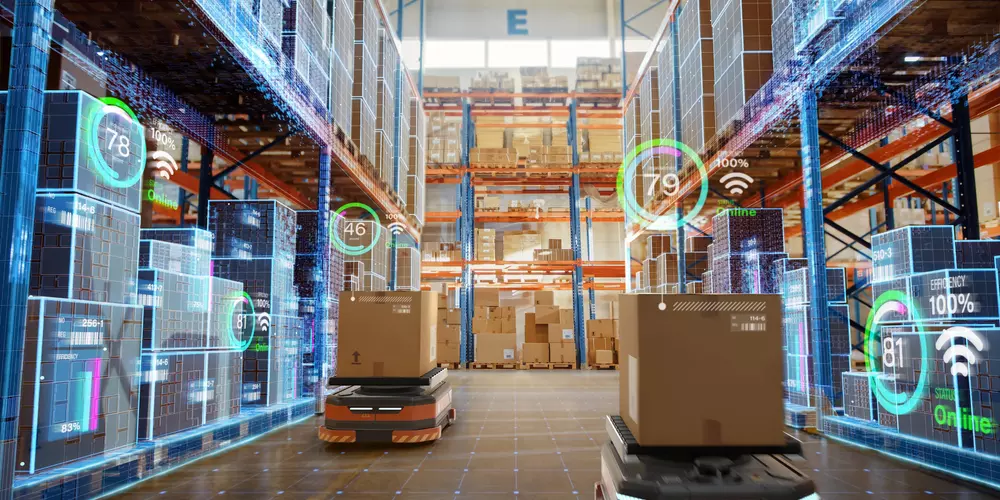On the (New) Edge of Tomorrow
On the (New) Edge of Tomorrow
As we are all aware, the pharmaceutical sector does not stand still. In fact, it is characterized by multiple “blink-and-miss-it” moments, whereby changes in its entire infrastructure seem to be taking place daily.

Never has this been more apparent than during the global COVID-19 pandemic. With major changes taking place in the supply chain to huge advancements in technology, the last 24 months have seen a seismic shift in the way that the pharma sector has had to adapt to the most intense pressure it has seen for generations.
The stark fact is that as technology becomes ever-more critical to our sector, especially with Industry 4.0. in motion; we will need to look at the very structure of how this technology is powered. This is where the importance of “new-edge technology” comes in.
Indeed, the advent of new-edge technology is set to rewrite the operations manual when it comes to critical warehouse operations. If any pharma company generally, or track-and-trace company specifically, fails to understand this, they will get left far behind those firms that embrace the opportunities that new-edge technology will bring.
Industry 4.0
Before focusing on the impact that new-edge technology will have, it is important to understand the huge, overall impact that technology will have on the entire pharma sector.
While Industry 4.0 has been called the fourth industrial revolution, its implementation will more likely resemble an evolution in which digitalization and automation meet very complex product portfolios and life cycles. Industry 4.0 will revolutionize the way the pharma sector works. Once only possible for international blue-chip corporations, robotics will become much more affordable and available to organizations of every size. From picking products at a warehouse to getting them ready to ship, autonomous robots can quickly and safely support manufacturers. Likewise, we will see distribution centers that will use autonomous cranes and trucks to streamline operations as they accept shipping containers from the ships.
A combination of cyber-physical systems, the Internet of Things, and the Internet of Systems, will power Industry 4.0 and allow the smart factory to become a reality. As a result of the support of smart machines that keep getting smarter as they get access to more data, the global pharma sector will become more efficient and productive, and less wasteful.
The problem with legacy computing systems
The traditional business computing set-up is built on a centralized data center. However, the global pandemic vaccine rollout has magnified the fact that the everyday internet isn’t well suited to moving endlessly growing rivers of real-world pharmaceutical track-and-trace data. Indeed, the ever-present threats resulting from bandwidth limitations, latency issues, and unpredictable network disruptions have threatened to cause major operational issues to those tasked with ensuring a watertight vaccine rollout to all four corners of the globe.
The prospect of moving so much data in situations that can often be time- or disruption-sensitive puts incredible strain on the global internet, which itself is often subject to congestion and disruption.
New-edge computing
Edge computing is a distributed IT architecture in which client data is processed at the periphery of the network, as close to the originating source as possible.
It shifts the focus from the central data center to the logical edge of the infrastructure—taking storage and computing resources from the data center and moving those resources to the point where the data is generated.
The principle is straightforward: If you can’t get the data closer to the data center, get the data center closer to the data.
Processing often involves normalizing and analyzing the data stream to look for business intelligence, and only the results of the analysis are sent back to the principal data center.
The impact of this new-edge technology on the pharma track-and-trace sector will be huge, especially where overall supply chain operations are concerned. We have seen a move toward a much more agile, local supply chain. The rapid uptake of digital barcode scanning systems combined with the very latest technology, has made supply chains much more secure.
New-edge computing will tighten this up even further. It will power automatic, time-sensitive supply chain processes in warehouses, factories, and manufacturing facilities. These processes will lessen the need for human management and create optimal outcomes while eliminating the risk of error due to manual processes.
Furthermore, new-edge technology will sit behind the rise of smart robots that are poised to transform warehouse operations even further. Indeed, Gartner predicts that 75% of large enterprises will have adopted some form of smart robots in their warehouse operations by 2026 as they search for flexible automation.
Overall impact of new-edge technology
Pharma companies will soon realize they will need to invest in new-edge technology. In part, this will result from the difficulties they are already facing, magnified by problems they will continue to face long into the future.
They are already enduring problems with finding an appropriately skilled workforce, and those who are already working within it are demanding ever-increasing salaries. There are also the effects resulting from the ongoing, residual impact of COVID.
These factors are enough to compel most companies to invest in cyber-physical systems, especially intralogistics and smart robots. New-edge technology allows higher automation and will vastly reduce the need for human interaction within the warehouse environment.
Transforming warehouse operations
One way that edge computing will drive the process will see the addition of a scanner with a mobile application supporting the handling of serialized products across the supply chain and within warehouse operations. It will run on commercially available devices deployed at the warehouse, packaging, and other operational facilities.
The product will provide complete visibility across the global supply chain. This, combined with the ability to connect with multiple Enterprise-Level (Level 4) serialization repositories, Warehouse Management Systems (WMS), and Enterprise Resource Planning (ERP) solutions, will complement the valuable investments made within existing solutions.
The outcome resulting from such changes will encourage a much higher compliance rate, and increased automation within the overall track-and-trace processes inside the warehouse.
New-edge technology will sit behind a significant change in how the pharma track-and-trace sector is structured. It will drive a much more automated process, which is already emerging due to Industry 4.0, and will result in the warehouse environment needing a much-reduced human workforce. Indeed, this combination of new-edge computing and Industry 4.0 will give the pharma sector an opportunity to revolutionize the way it works. The ability for individual companies to cooperate and complement each other in real time will enable giant strides to be made for the overall efficiency of the sector.
All individual components of the pharma industry, be it medicine producers, track-and-trace specialists, or logistics providers, need to look now at what they need to do to prepare for the changes ahead. Large components of it are already here and have been adopted by many organizations without realizing it. A much bigger and more proactive push will enable a smooth transition for other aspects—and will allow for a much tighter, coordinated pharma manufacturing sector, which will benefit us all.
Click here to view the original article in the October issue of Pharmaceutical Commerce.



